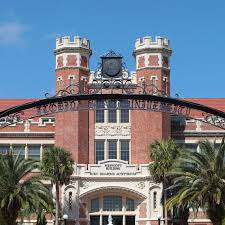Speaker
Description
Searching QCD critical point is one of the fundamental goals of heavy-ion collisions. The observed non-monotonic behavior with the colliding energies[1,2] was declared to be related to the critical point of the QCD phase diagram[3,4].
To reveal the critical fluctuations effects on the light-nuclei productions, one should address the problem of scale separation and magnitude separation problems. Specifically, the scale or the magnitude related to the background effects on light-nuclei production are dramatically larger than the ones of critical fluctuations, which hinders the detection of critical signal in light-nuclei individually. In this talk, I will focus on this problem and study the possible effect.
Within the coalescence model, we systematically study how does the background[5] and critical signal[6] play the role in the production of light nuclei. We find that the productions of light-nuclei with different number of constituent nucleons share the same structure up to second-order phase-space cumulants. Accordingly, we construct light-nuclei yield ratio which is directly proportional to the critical correction. The large scales related to light-nuclei are largely cancelled in the ratios and critical correlation length plays an important role. This reveals that the properly constructed yield ratios, not the yield individually, largely free from the scale and magnitude problems. In addition, we also predict a non-trivial behavior of the constructed light-nuclei yield ratios as the imprint the critical fluctuations and could be regarded as one of the candidates to probe the critical point.
[1] H. Liu, D. Zhang, S. He, K.-j. Sun, N. Yu, and X. Luo, Phys. Lett. B 805, 135452 (2020).
[2] D. Zhang (STAR), JPS Conf. Proc. 32, 010069 (2020).
[3] E. Shuryak and J M.Torres-Rincon, Eur.Phys.J.A 56 (2020) 9,241.
[4] K.-j. Sun, F.Li and C.M.Ko, Phys.Lett.B 816 (2021) 136258.
[5] S.Wu, K.Murase, S.Tang and H.Song, 2205.14302.
[6] S.Wu, K.Murase, S.Zhao and H.Song, to appear.
| speaker affiliation | CHEP, Peking University |
|---|

